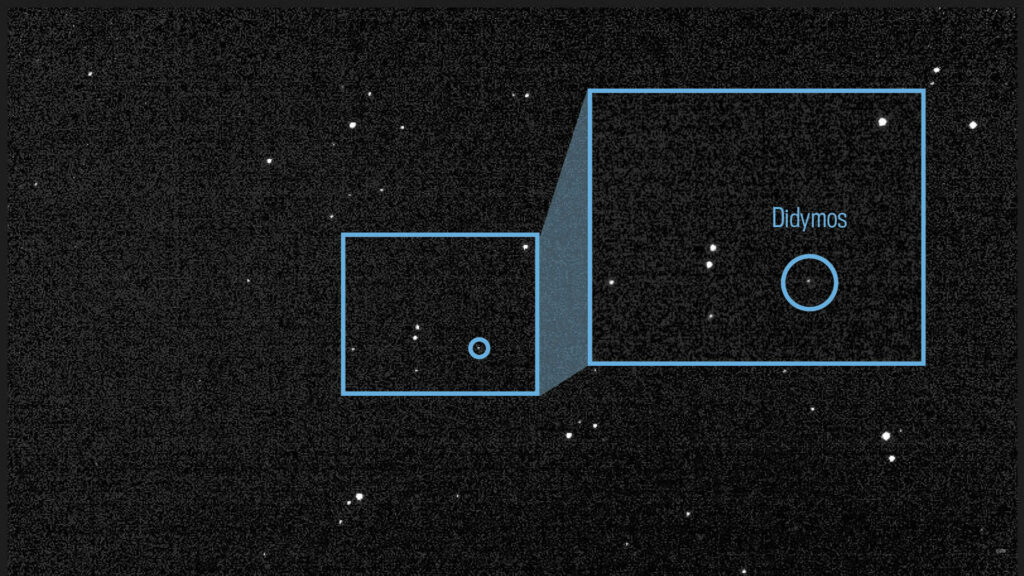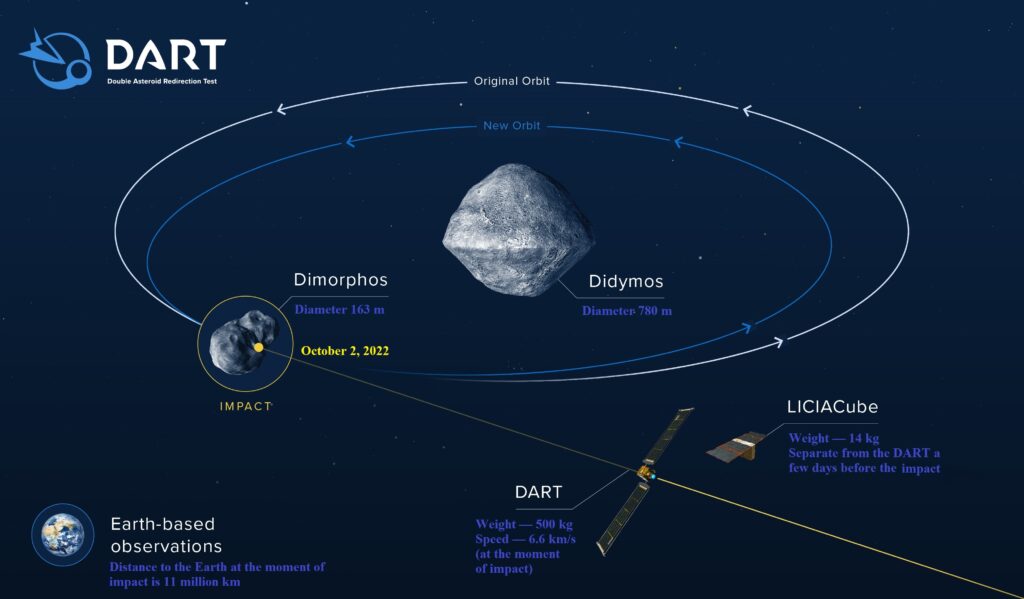The DART mission support Group (Double Asteroid Redirection Test) has published the first image of the asteroid Didymos. In less than three weeks, the spacecraft will crash into its Dimorphos satellite. The purpose of the experiment is to test the possibility of changing the trajectory of dangerous celestial bodies by kinetic action.

The image of Didymos was obtained using the DRACO camera installed on DART (Didymos Reconnaissance and Asteroid Camera for Optical navigation). On July 27, 2022, it took 243 pictures of the area of the sky where Didymos was located.
Since at the time of shooting the distance between DART and Didymos exceeded 20 million km, and the diameter of the asteroid is only 780 meters (Dimorphos is even smaller, its diameter is 180 meters), many experts doubted that the camera would be able to cope with the task. But after processing the images, they managed to find a point corresponding to Didymos.
The successful asteroid shooting was an important milestone for the mission, because the success of DRACO depends on whether the spacecraft will be able to hit its target. The fact is that the “interception” of the Dimorphos will be carried out at a distance of 11 million km from our planet. Due to the signal delay, in the final hours of the DART mission, it will be necessary to independently calculate the position of the asteroid from DRACO images and perform the necessary course corrections so as not to miss the target.

In the next three weeks, DART will make three course corrections, which will have to reduce the error in determining the position of the Dimorphos to 2 kilometers. 24 hours before the impact, the device will be taken offline, after which its on-board computer will independently decide on new maneuvers. The collision with the Dimorphos is scheduled to take place on September 26, 2022.
Recall that a few days before the event, the Italian LICIACube cubesat will separate from DART. It will photograph the moment of impact using a Gecko camera built by Dragonfly Aerospace, a company owned by Ukrainian entrepreneur Max Poliakov.
According to https://www.nasa.gov
Follow us on Twitter to get the most interesting space news in time
https://twitter.com/ust_magazine
